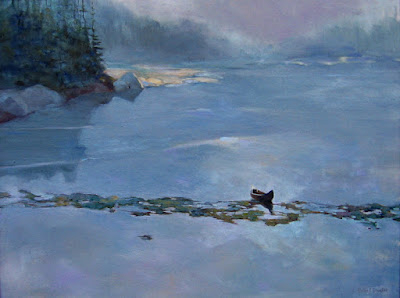A tragic gentleman amateur gave England its first watercolors of America
 |
|
Religious rite of the Secotan-Indians in North Carolina, by John White, c. 1585, courtesy of the British Museum
|
I’ve written before about how the Cult of Genius gave society the misguided notion that art is a special gift for only a special few. Before the 18th century, drawing and painting were part of the gentleperson’s toolkit.
John White is remembered as the governor of the tragic Lost Colony of Roanoke. He was also a fine painter. His field sketches spurred a mania for exploration and settlement of the New World.
Almost nothing is known about his background. He attended St. Martin’s Church, Ludgate, married Thomasine Cooper in 1566, and fathered at least two children. He was involved with the court of Elizabeth I, and a friend of Sir Walter Raleigh. He had the education of a gentleman.
|
Woman of the Secotan-Indians in North Carolina, by John White, c. 1585, courtesy of the British Museum
|
Raleigh sent White as artist-illustrator to the mad Sir Richard Grenville‘s first voyage to the New World. His paintings from this trip are an historical treasure. They’re our sole visual documentation of the natives of North America before European settlement.
|
A plan of the coast near Roanoke Colony, by John White, c. 1585, courtesy of the British Museum
|
White’s paintings were a sensation in Europe. They were reproduced through engraving by Theodore de Bry and published in 1590 under the title America.
Raleigh next gave White the task of organizing a new settlement in Chesapeake Bay. White convinced more than a hundred colonists to join him, including his daughter Eleanor and son-in-law Ananias Dare. In reward, he was named the colony’s governor.
 |
|
An Algonquin sorcerer, by John White, c. 1585, courtesy of the British Museum
|
Roanoke Colony was never their goal. Their navigator simply refused to bring them north to Chesapeake Bay. His argument was that “summer was farre spent, wherefore hee would land all the planters in no other place.”
Grenville had left 15 men to defend his old discovery. They were all dead. The new settlers fixed up the old cabins. In their first military foray against hostile tribes, they accidentally killed friendly natives instead. Henceforth, relations with the locals—already fraught because of Grenville’s “intolerable pride and insatiable ambition”—would steadily deteriorate. Still, things went well for a time. White became a grandfather, to the New World’ first European baby, Virginia Dare.
|
Curing fish over a fire, by John White, c. 1585, courtesy of the British Museum
|
Unfortunately, the colonists were starving. Their supply ships were expecting to find them a hundred miles to the north. White returned to England, much against his will, to fix the problem. After a harrowing sail, he arrived in Ireland in October of 1587. His timing was atrocious. The Spanish Armada threatened, and all shipping from England was embargoed
.
In early 1588 White was able to scrape together a pair of small pinnaces which were useless for military service. They were set upon by pirates and lost all their provisions. White and his crew narrowly made it back to England.
 |
|
Clay pot boiling over a fire, by John White, c. 1585, courtesy of the British Museum
|
Finally, in March 1590, Raleigh was able to send help. They landed at Roanoke on Virginia Dare’s third birthday. The buildings were gone and the settlers had disappeared. The Englishmen spent months looking for them, but they were never found.
White never fully recovered. He ended up on Raleigh’s estates in Ireland, where he brooded on the “evils and unfortunate events” at Roanoke. He never gave up hope that his daughter and granddaughter were somewhere, still alive.
It’s about time for you to consider your summer workshop plans. Join me on the American Eagle, at Acadia National Park, at Rye Art Center, or at Genesee Valley this summer.








